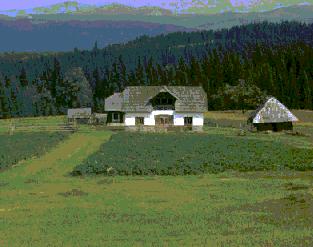 Some
call Romanian "the least Romance" among all languages of the group. In
fact, it is quite Romance, though it acquired very numerous new features
from languages which were spoken in Romania before and after the Roman
conquest. These lands used to be regions of Thracian
speakers, who were assimilated by Roman colonists in the beginning of the
AD era. Shortly afterwards, when the Roman Empire collapsed, Romania had
so many different nomadic tribes and nations on its lands, both Asiatic
and European, that it is sometimes impossible to say, which languages left
their traces here. Sarmatian, Hunnic, Gothic, Slavic, Hungarian - they
all tried to settle here. But the Romance tongue appeared very string and
survived.
Some
call Romanian "the least Romance" among all languages of the group. In
fact, it is quite Romance, though it acquired very numerous new features
from languages which were spoken in Romania before and after the Roman
conquest. These lands used to be regions of Thracian
speakers, who were assimilated by Roman colonists in the beginning of the
AD era. Shortly afterwards, when the Roman Empire collapsed, Romania had
so many different nomadic tribes and nations on its lands, both Asiatic
and European, that it is sometimes impossible to say, which languages left
their traces here. Sarmatian, Hunnic, Gothic, Slavic, Hungarian - they
all tried to settle here. But the Romance tongue appeared very string and
survived.
Romanian is spoken not only in the very country, but also is the official language of Moldavia (there it is called Moldovan), also used by Romanian groups in Bulgaria, Hungary, Yugoslavia and Ukraine. Its closest tongues include Balkano-Romance languages like Istroromanian in Croatia and Aromanian in Macedonia, Albania and Greece.
The Romanian literary language is based on the Daco-Romanian of the historic region of Walachia, in southern Romania. Romanian preserves some Latin traits lost in other Romance languages, notably the inflection of nouns. It preserved here, as many believe, under the influence of Slavic tongues. Romanian also has some characteristics common to the languages spoken in the Balkan Peninsula (most of which are not Romance languages), such as the placement of the definite article after the noun, like in Bulgarian and Macedonian. Romanian has absorbed an unusually large number of words from the Slavic languages, the Greek language, the Turkish language, the Hungarian language, and the Albanian language.